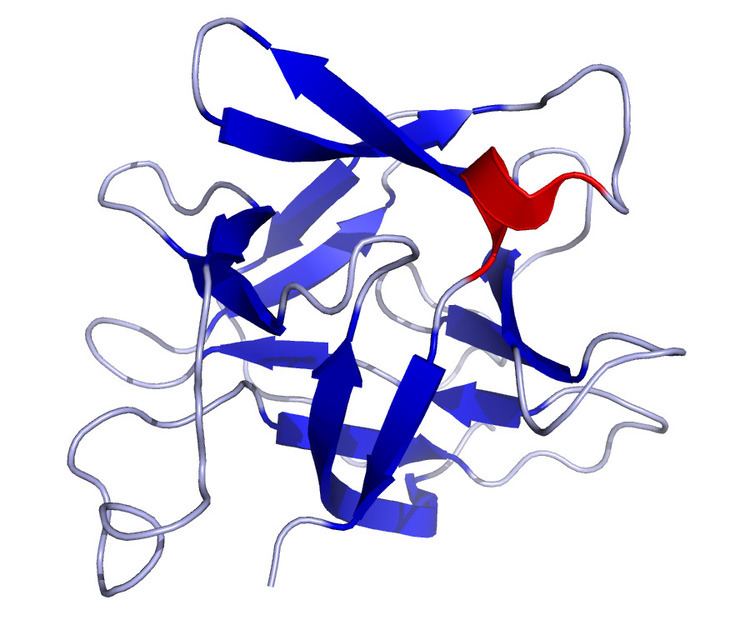Entrez 3606 | Ensembl ENSG00000150782 | |
 | ||
Aliases IL18, IGIF, IL-18, IL-1g, IL1F4, interleukin 18 External IDs OMIM: 600953 MGI: 107936 HomoloGene: 1200 GeneCards: IL18 | ||
Interleukin-18 (IL18, also known as interferon-gamma inducing factor) is a protein which in humans is encoded by the IL18 gene. The protein encoded by this gene is a proinflammatory cytokine.
Contents
Function
IL-18 is a cytokine that belongs to the IL-1 superfamily and is produced by macrophages and other cells. IL-18 works by binding to the interleukin-18 receptor, and together with IL-12 it induces cell-mediated immunity following infection with microbial products like lipopolysaccharide (LPS). After stimulation with IL-18, natural killer (NK) cells and certain T cells release another important cytokine called interferon-γ (IFN-γ) or type II interferon that plays an important role in activating the macrophages or other cells.
The combination of this cytokine and IL12 has been shown to inhibit IL-4 dependent IgE and IgG1 production, and enhance IgG2a production in B cells. IL-18 binding protein (IL18BP) can specifically interact with this cytokine, and thus negatively regulate its biological activity.
Clinical significance
Apart from its physiological role, IL-18 is also able to induce severe inflammatory reactions, which suggests its role in certain inflammatory disorders.
Endometrial IL-18 receptor mRNA and the ratio of IL-18 binding protein to interleukin 18 are significantly increased in adenomyosis patients in comparison to normal people, indicating a role in its pathogenesis.
IL-18 has been implicated as an inflammatory mediator of Hashimoto's thyroiditis, the most common cause of autoimmune hypothyroidism. IL-18 is up regulated by interferon-gamma.
IL-18 has also been found to increase the Alzheimer's disease-associated amyloid-beta production in human neuron cells.
Age-related macular degeneration (AMD)
IL-18 acts as a guardian of eyesight by eliminating VEGF from the eye, thereby suppressing the production of damaging blood vessels behind the retina at the back of the eye. In pre-clinical models, IL-18 was administered intravenously, improving on the regular ocular injections of VEGF antibodies that is the standard of care. AMD is one of the most common forms of blindness among the aging. The two forms of AMD are 'dry' (the majority of cases) and wet, which causes 90% of blindings. Wet AMD causes sub-retinal blood vessels to grow excessively, which causes almost immediate central blindness. Prior treatment options for wet AMD were limited to the condition's end stages.
